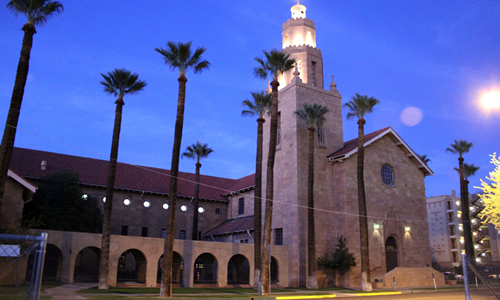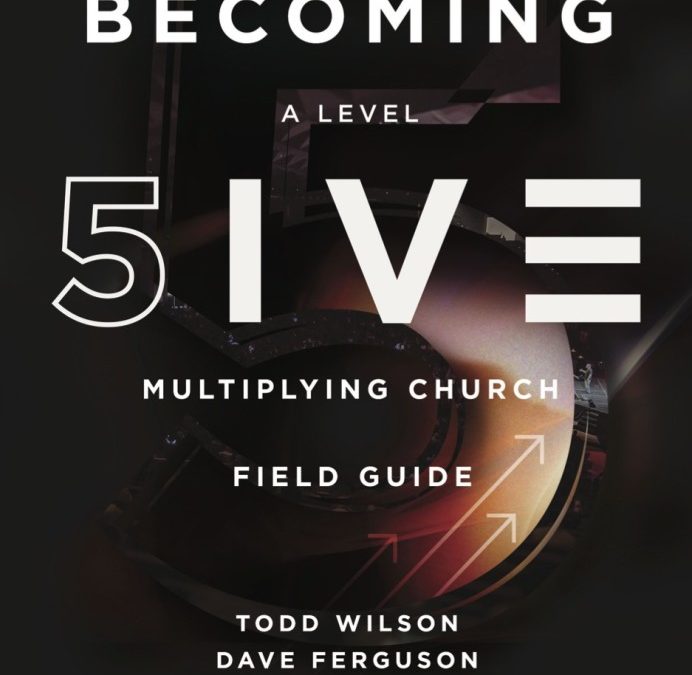
by Gary Reinecke | Oct 31, 2016 | Uncategorized |
What do you provide those you lead?
When you coach those you lead, you have the opportunity to help them focus. Whether you are helping them:
- see where they fit in a larger vision
- understand where they are in the mission God has entrusted
- take the next step to help them clarify a vision God is revealing to them
Focus is the gift you give to those you are developing, influencing, empowering.
I am in Hong Kong as I write this blog – training leaders who are making disciples and planting churches in under-served and under-reached regions of our world. These leaders are learning how to coach leaders and spark discipleship making movements (DMM). My job is to help them understand how coaching compliments their disciplemaking efforts.
I like to use the analogy of a train track. Think of one rail representing the “strategic” (DMM in this instance) aspect and the other rail representing the “relational” (coaching) aspect. Together, these two rails provide a path for leaders to travel – keeping the focus on fueling a movement of making more and better disciples. When you have an effective strategy in conjunction with a comprehensive coaching process, you can help keep leaders focused.
Remember the gift you are giving away. What systems do you use in conjunction with coaching?

by Gary Reinecke | Oct 25, 2016 | Uncategorized |
How many times have you heard leaders share that they are considering a “new ministry” opportunity. Sometimes, it is a natural response to the monotony of life and other times it is a case of the “grass is greener” fallacy. In other circumstances, a leader might find themselves in transition. When I speak to leaders about transition I like to explain three phases: Pre-transition, Transition and Post-transition.
When coaching leaders through transitions I’ve used three helpful questions:
- Where have you been?
- Where are you going?
- How will you get there?
I remember when I first came across a process that addressed these questions, I was a third year seminary student. My instructor, Dr. Gordon Klenck had returned from a 30-year stint as a missionary in Europe. During his doctoral work at Fuller Seminary he took a course entitled Leadership Emergence Theory from Dr. Robert Clinton. The material was in the formative stages but the process helped me turn the corner on what I eventually did following graduation and set me on the trajectory that I continue to this day. The Focused Living Retreat Workbook is a reformulation of that process and does an effective job helping a leader:
- Look back – Personal Time Line
- Look forward – Personal Calling Statement
- Look around – Mentoring plan
I’ve used this resource in a number of different settings with a high degree of effectiveness e.g. graduate leadership courses, small group gatherings and 1-1 coaching. The process of discerning God’s will is not formulaic, nor is it linear; it is more like spaghetti. Imagine twirling your fork in a pile of noodles, finding a few that land on your utensils and into your mouth. This illustrates how the discernment process works. Once a leader has a sense that she/he is in transition, they begin the journey of twirling their fork. Going through this process in collaboration with a coach can help a leader move intentionally and fruitfully through a transition period.
What tools have you used to help leaders navigate transitions in their life and ministry? Please share your ideas below.

by Gary Reinecke | Oct 17, 2016 | Church Growth, Church Multiplication, Disciplemaking, Uncategorized |
In 1988 I was a young seminary student engaged in church planting when my life intersected with an even younger college student named Tim Vink. Tim and I met as short-term missionaries with Youth With a Mission in Amsterdam, The Netherlands. We participated in street evangelism, ministered to young adults in night clubs and connected with a variety of people in the famed Red Light District to share the life-transforming message of the Gospel. Many late nights were spent discussing the adventures of the day, challenges of the unique spiritual dynamics in the city and our dreams for the future. One conversation stands out to me. When asked what he felt God had called him to do with his life, Tim’s response was to lead a church multiplication movement (his actual answer was to “disciple a denomination” but I didn’t have a category that fit that vision).
When I caught up with Tim in 1999 he was leading a church that was in the early stages of planting new churches. Tulare Community Church is a church planting church. Presently. Tim serves in a national capacity for his denomination where he is helping leaders embrace a church multiplication DNA. I asked Tim recently how many churches Tulare has planted, and as of Spring 2016 the number was around 35 – and still counting. Some of the churches that Tulare has planted are planting into the third generation. As a network, the denomination has planted over 360 churches to-date.
Tulare Community Church is a Level 5 Church – bent on multiplying, releasing and sending.
Previously, I introduced the book “Becoming a Level FIVE Multiplying Church Field Guide” (by Todd Wilson and Dave Ferguson with Alan Hirsch) and five levels of church multiplication as follows:
- The primary characterization of Level 1 churches are “subtraction, scarcity, and survival.”
- The primary characterization of Level 2 churches are “tension, scarcity, survival, and growth.”
- The primary characterization of Level 3 churches are “addition, growth and accumulation.”
- The primary characterization of Level 4 churches are “discontent, new scorecards and reproducing at all levels.”
- The primary characterization of Level 5 churches are “multiplying, releasing and sending.”
I found the book with the self-assessment helpful to determine where congregations are on the multiplication continuum. Read “Becoming a Level FIVE Multiplying Church Field Guide” and administer the self-assessment to determine where you are on the multiplication continuum. Here are a few questions to help a Level 5 church reflect and reproduce church planting movements:
- What changes can we make to raise the bar on discipleship and lower the bar on leadership?
- What aspects of our disciple-making and leader development processes are easily reproducible?
- What aspects of our disciple-making and leader development processes are challenging to reproduce?
- What steps can we take to reproduce disciples more effectively and efficiently?
- What steps will we take?
I’ve observed that when leaders have the right DNA and are willing to remove human barriers to church multiplication, the Holy Spirit is able and willing to move rapidly in people’s hearts so that His church is empowered to fulfill the mission to disciple the nations.

by Gary Reinecke | Oct 9, 2016 | Church Growth, Church Multiplication, Disciplemaking, Focused Ministry, Leader Development, Uncategorized |
You are probably familiar with a Level 1 church. It is a church bent on survival. In 1988 I began a long and arduous journey with Historic First Church in Phoenix, AZ. The only way out of the dismal decline, from my perspective, was to plant a new and vibrant church with the intent of revitalizing the parent church. To work within the denominational polity we were led to plant a church within a church – aka “venue”. Some 25+ years later that new congregation has evolved into an urban, multi-ethnic community of faith call Urban Connect relocated in the revitalized warehouse district. Lot’s to report from that experience but for now, this Level 1 church serves as a good example of a church that has taken the leap to become a Level 4 church – read more below.
Previously, I introduced the book “Becoming a Level FIVE Multiplying Church Field Guide” (by Todd Wilson and Dave Ferguson with Alan Hirsch) and five levels of church multiplication as follows:
- The primary characterization of Level 1 churches are “subtraction, scarcity, and survival.”
- The primary characterization of Level 2 churches are “tension, scarcity, survival, and growth.”
- The primary characterization of Level 3 churches are “addition, growth and accumulation.”
- The primary characterization of Level 4 churches are “discontent, new scorecards and reproducing at all levels.”
- The primary characterization of Level 5 churches are “multiplying, releasing and sending.”
I found the book with the self-assessment helpful to determine where congregations are on the multiplication continuum. Read “Becoming a Level FIVE Multiplying Church Field Guide” and administer the self-assessment to determine where you are on the multiplication continuum. Here are a few questions to help a Level 1 church reflect and move forward, based on a self-assessment the authors created:
- Are we content being a Level 1 church?
- What options do we have to grow and reproduce?
- What level can we, by God’s grace, realistically become?
- What steps can we take to get from here to there?
- What steps will we take?
In the upcoming blogs I will take a closer look at the 5 Levels of Multiplication to illustrate the characteristics above with questions to coach your team to the next level.

by Gary Reinecke | Oct 2, 2016 | Church Growth, Church Multiplication, Leader Development |
Last year my home church, Crosspoint Community Church established it’s first “site” or campus in a local winery. The venue is intimate, DVDs of the sermon are played to convey the message and a large percentage of the people who now call Crosspoint in the Vines their home were not in a church 18 months ago. In a few months, Access Church will go public representing the first church plant that Crosspoint has launched. This affirms one of the two primary missions of the local church – “to care for the poor and plant churches” according to Lead Pastor, Steve Redden.
In the book “Becoming a Level FIVE Multiplying Church Field Guide” (by Todd Wilson and Dave Ferguson with Alan Hirsch) the authors identify five levels of multiplying churches as follows:
- The primary characterization of Level 1 churches are “subtraction, scarcity, and survival.”
- The primary characterization of Level 2 churches are “tension, scarcity, survival, and growth.”
- The primary characterization of Level 3 churches are “addition, growth and accumulation.”
- The primary characterization of Level 4 churches are “discontent, new scorecards and reproducing at all levels.”
- The primary characterization of Level 5 churches are “multiplying, releasing and sending.”
I found the book with the self-assessment helpful to determine where congregations are on the multiplication continuum. Read “Becoming a Level FIVE Multiplying Church Field Guide” and administer the self-assessment to determine where you are on the multiplication continuum. Here are a few questions to help you reflect and move forward based on your assessment:
- Where are we today?
- Where can we grow?
- What level do we want to become?
- What steps can we take to get there?
- What will we do?
In the upcoming blogs I will take a closer look at each of the 5 Levels of Multiplication to illustrate the characteristics above with questions to coach your team to the next level.




